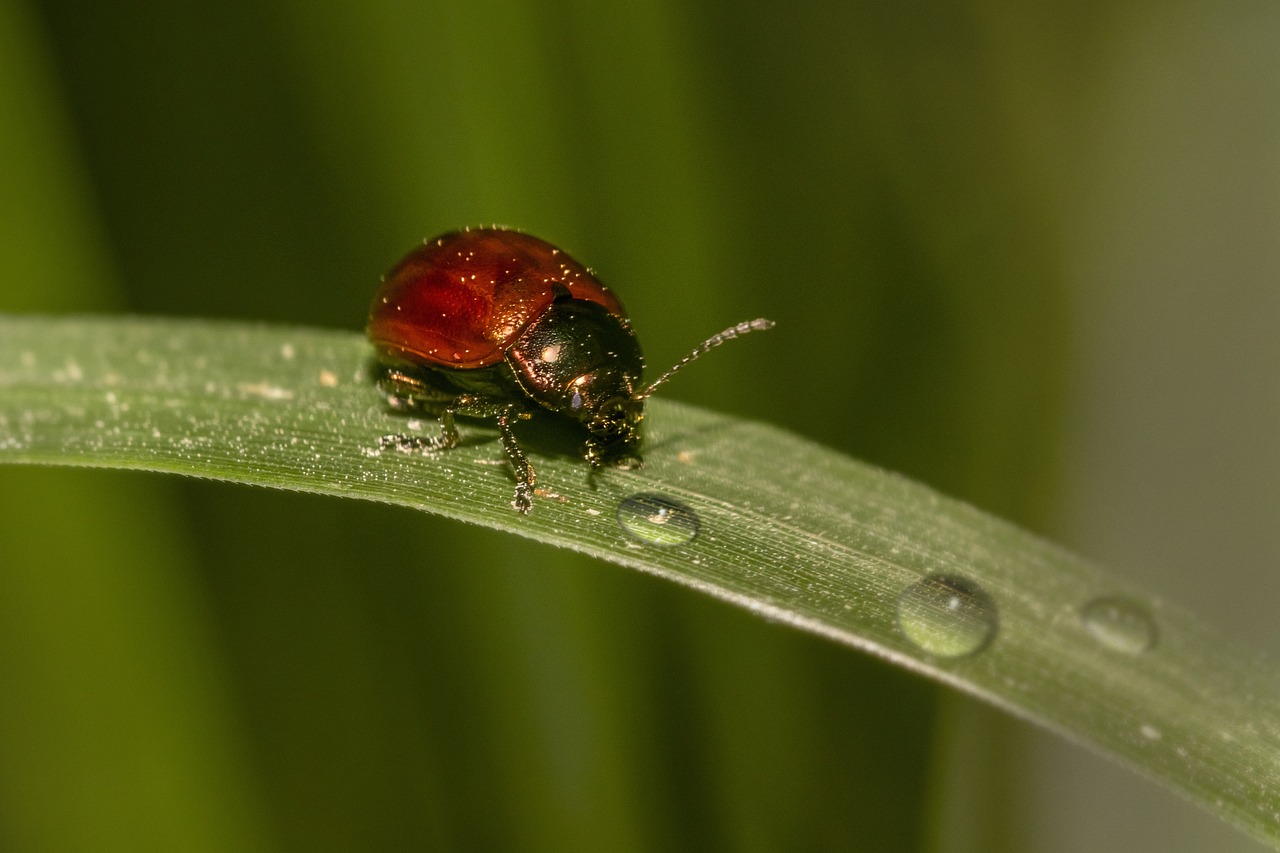The Knotgrass Leaf Beetle (Chrysolina polita) is a small, brightly colored beetle found across Europe. Here’s an overview of its key features and behavior:
Key Characteristics:
- Appearance:
- Size: Typically 5–7 mm in length.
- Coloration: It has a distinctive, shiny, metallic appearance, often with hues of green, bronze, or copper, depending on the light. Its polished, smooth elytra (wing cases) make it stand out.
- Shape: The beetle has an oval-shaped, compact body, characteristic of leaf beetles.
- Habitat:
- Found in a variety of habitats, including grasslands, meadows, and woodland edges, where its host plants—mainly knotgrass (Polygonum species)—are present.
- It prefers sunny, warm environments with abundant vegetation.
- Diet:
- Feeding: Both larvae and adults are herbivorous and primarily feed on knotgrass and other plants in the Polygonaceae family. Adults chew on the leaves, while larvae also feed on the same plant tissue, occasionally causing damage to the host plants.
- Behavior:
- Life Cycle: The beetle undergoes complete metamorphosis, including egg, larval, pupal, and adult stages. Eggs are laid on host plants, and after hatching, the larvae feed until they pupate in the soil.
- Activity: It is typically most active during the warmer months, from spring to late summer.
- Ecological Role:
- As a plant feeder, this beetle plays a role in controlling the growth of knotgrass and related species.
- It serves as prey for various predators, including birds and predatory insects, contributing to the food web.
Conclusion:
The Knotgrass Leaf Beetle (Chrysolina polita) is a small, metallic, herbivorous beetle that feeds primarily on knotgrass. Its shiny, attractive appearance makes it a notable species in the ecosystems where it thrives, contributing to both plant population dynamics and serving as a food source for predators.
Visited 853 times, 10 visit(s) today
Views: 1263
Subscribe to the newsletter:
